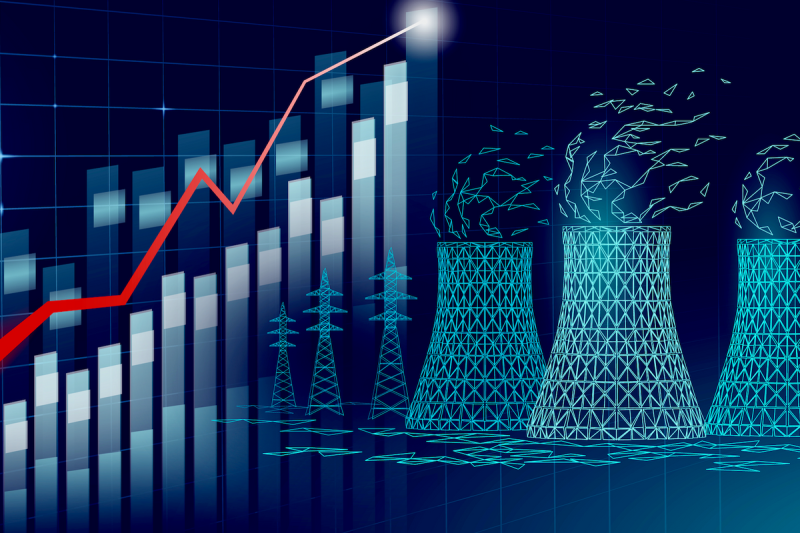US Plans to Triple Nuclear Power Capacity by 2050

The Biden administration has announced a strategic roadmap to significantly expand the United States’ nuclear energy capacity, setting a target to triple capacity by 2050.
In a new 9-pillar framework, the Biden-Harris administration has laid out its plans to add 200 gigawatts (GW) of new nuclear energy through new reactor builds, reactivations and upgrades to existing facilities.
The initiative seeks to meet a growing demand for reliable, carbon-free power as the nation transitions away from fossil fuels and toward cleaner energy sources.
Under the new roadmap, the country has set a preliminary goal of deploying 35 GW of new nuclear power by 2035, either operating or under construction at that time. Annual capacity deployment will continue to ramp up to hit its goal of a sustained 15 GW per year between 2040 and 2050.
In addition to bolstering nuclear infrastructure, the plan also calls for initiatives to expedite licensing for reactor projects, establish stable tax incentives and explore opportunities to add new reactors to existing nuclear sites.
By targeting both short- and long-term milestones, the administration intends to gradually build the infrastructure and capacity required to reach its overall objective.
More crucially, the administration’s framework is also designed to accommodate flexibility and continuity, enabling future administrations to continue the plan regardless of political changes.
This strategy has gained bipartisan support in Congress, where legislators recently passed new measures to facilitate nuclear development and advance regulatory frameworks, showing a shared commitment to boosting the industry.
President-elect Donald Trump has also voiced support for nuclear energy during his campaign, promising to meet rising industrial energy demands and drive down electricity prices for consumers.
Strategy aligns with global efforts to expand nuclear power
The Biden administration’s roadmap aligns with a broader global push to elevate nuclear energy’s role in climate action.
Last year, at the United Nations Climate Change Conference, the US joined 20 other nations in pledging to triple global nuclear capacity by 2050.
This week, at COP29 in Baku, Azerbaijan, six more countries added their support to this goal, bringing the total number of signatories to 31. Among these new endorsers are nations like El Salvador, Kenya and Türkiye, highlighting nuclear energy’s growing appeal worldwide as a stable, low-emission energy source.
According to data from the International Energy Agency, global nuclear capacity has largely plateaued since the Fukushima disaster in 2011, but interest is renewing as countries confront the urgency of climate commitments and rising electricity demand.
Advanced economies, including the United States, are leading efforts to secure nuclear energy as a key component of their energy transition strategies.
Meanwhile, the US Department of Energy wants to regain America’s competitive edge in nuclear technology, aiming to position the US as a top supplier of nuclear energy solutions.
Nuclear power, which currently provides about 9 percent of global electricity, ranks second to hydropower among clean energy sources, according to the World Nuclear Association. With over 60 reactors under construction worldwide, nuclear’s role in the energy transition is expanding, supported by both governmental and private sector initiatives.
Private sector support for nuclear energy in full swing
As the US government moves to implement the framework, private sector interest in nuclear energy is similarly growing, driven in part by the demand for energy-intensive data processing and artificial intelligence (AI) applications.
Companies like Microsoft (NASDAQ:MSFT) have recently pursued nuclear energy deals to ensure consistent, high-output power for their data centers.
The company entered into an agreement in September to receive power from Pennsylvania’s Three Mile Island nuclear facility — which owner Constellation Energy (NASDAQ:CEG) is now working towards restarting — to meet the company’s clean energy goals.
With this roadmap, the US aims to position itself as a global leader in nuclear energy, reaping both economic and environmental benefits.
Securities Disclosure: I, Giann Liguid, hold no direct investment interest in any company mentioned in this article.




